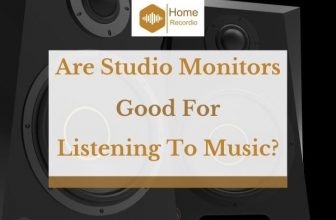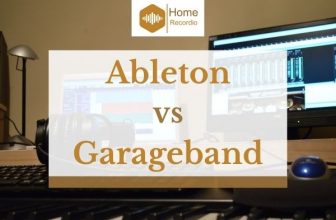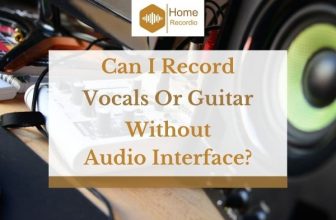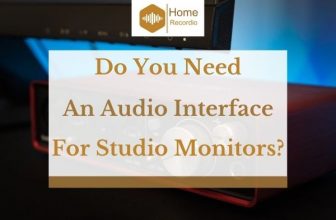USB Microphone vs Audio Interface
This is a perennial debate in the home recording community, so it’s an issue that we will address fully in this comprehensive article. The question is about the USB microphone vs audio interface systems.
We will compare them in a number of different categories including affordability, ease of use, convenience, quality, reputable manufactures etc.
Hopefully, if you take into account all the advice contained in this article, and exercise your own judgement, then you will choose the best system to suit your needs.
It is important to remember that each system has its own advantages and disadvantages, and personal requirements will differ from case to case, so there is no one size fits all situation.
Differing needs will mean that USB microphones will be suitable for some people, but audio interfaces will be better for some people.
If you wanted to find out everything, you’ll ever need to know about USB microphones and audio interfaces, then you’ve come to the right place.
Table of Contents
USB Microphones
Video: “How To Use a USB Microphone”
USB microphones are the ultimate convenience recording accessory. It is very much just a case of plug in and play, so even the most inexperienced novice will be able to master this technology.
It is very simple to use a USB microphone. To get it set up all you need to do is plug in the USB and click on the audio icon in the bottom corner of your computer screen.
Next, simply set the USB microphone as the default audio input and you can start to play with some of the settings such as the sensitivity and total volume.
Fully Integrated System
The great thing about a USB microphone is that it is a fully integrated system. This means it includes the recording device itself, including the diaphragm, and all the controlling/transmitting equipment that processes the signal and sends it to the computer.
Unlike with an audio interface setup, you don’t need to worry about purchasing other equipment to complement the system, and you don’t need to worry about compatibility with other pieces of equipment.
There is a lot to be said for the simplicity of such an all-inclusive integrated system.
This means there is a low barrier to entry for novices to the area of sound recording, who may be setting up their home studio for the first time. On the other hand, there is an obvious trade off in terms of freedom and flexibility, where other systems may be superior.
Best For Budget
There are a few other advantages and disadvantages to note about the USB microphones. Many types of USB microphones have built in recording interfaces. This is what distinguishes it from most simple XLR mics, which rely on attached devices to provide the recording interface.
The built-in electronics from a USB microphone can actually provide very decent recording. Most digital USB microphones can provide high recording resolution at a relatively low cost. Plus, most USB systems will include a built-in preamp, unlike XLR/audio interface systems.
Preamps can be expensive, so having an internally integrated one can help you to save a lot of money. However, sampling rates for USB microphones can hover around 50 kHz, whereas much higher sampling rates are possible with dedicated audio interfaces.
Another notable disadvantages with USB microphones is that all the complex internal circuitry can add a great deal of self-noise to the system. As any audio recording professional will tell you, noise is the enemy of good recordings.
Self-noise is the random, distorted additions to the signal that result purely from the internal design and imperfections of the equipment.
More complicated designs and active systems like USB mics generally contribute much more noise, which can distort the music you are working on, and generally lead to poorer results.
Pros and Cons of USB Microphones
[amazon box=”B06XCKGLTP”]Now that we are aware of what an usb mic is let us learn about its pros and cons.
- They are simple to use. Most USB microphones can be used by just plugging them in and selecting from a few simple default options.
- Convenience. They are fully integrated pieces of kit which include all the recording hardware and processing equipment required, without worrying about compatibility issues.
- Affordable. Because you don’t need to buy separate mics or other pieces of kit such as pre-amps, the total cost of USB microphone systems is far lower than competitor systems.
- Fully digital system
- Portable
- High self-noise
- Lack of flexibility or editing options
- Lower sampling rates than dedicated audio interfaces
Audio Interfaces
Video: “What Is An Audio Interface And What Do We Do With It?”
Now let’s address the other side of the great usb microphone vs audio interface discussion.
The other major option for people looking to invest in modern vocal recording equipment is the ubiquitous audio interface. First of all, it is important to understand the limitations of an audio interface, and what it is exactly.
As the name suggests, the audio interface is simply a step or boundary between the initial piece of recording equipment and the final editing environment, usually on an attached computer.
It can also be used in reverse, taking outputs from a computer or other digital device, and sending them to a device such as a woofer or a speaker, which is capable of producing sound at the other end.
The important thing to understand is that an audio interface requires a microphone to be connected in order to record sound. It is not a fully integrated system like the previously featured USB device.
The range of microphones that you can connect is large, but usually either moving diaphragm condenser microphones, or solid-state microphones, are preferred.
There are also a number of options for how to connect the microphone to the interface, but usually XLR connections are the industry standard.
Audio interfaces can usually accept a number of inputs and outputs. There are a wide range of audio interfaces currently on the market, and they differ in a number of ways, from built quality and brand reputation, to sampling speed and distortion levels.
Inputs and Outputs
The single most important price-adjusting factor is the total number of inputs and outputs. A clean, usable interface is also important, so that it can compete with the sheer usability of the USB microphone option.
There are a number of advantages to the audio interface solution, which distinguish it from the USB microphone option. First of all, flexibility is key. You can do a lot more with an audio interface. For example, most versions will allow you to plug in a lot more than just one microphones.
A lot of interfaces will have more than one integrated pre-amp, so you can plug in a lot more than a single microphone. Also, you can do a lot more than simply record vocals. For instance, you can hook it up directly to an acoustic-electric guitar or a digital keyboard.
Because of this, you can record an entire ensemble or band, instead of just a solo artist. And since you can capture each individual element perfectly, you can mix together tracks and do some fancy editing at the final stage, without losing any raw data.
The connected XLR mic also affords you more flexibility. Usually, a USB microphone can simply be used to record vocals. On the other hand, an XLR mic connected to a top-quality audio interface can have so many other uses.
For example, you can use it to record music live, connect it to a mixing system, or plug it into a camera. There is so many more options available to you with an audio interface.
Higher Sound Quality
Flexibility is not the only advantage that comes with a separate mic and audio interface. It also gives you an opportunity to go for a higher quality microphone. For instance, with a top-quality interface and mic, you can get higher sampling rates than with USB microphones.
You can easily achieve sampling rates up to 193 kHz. There are other superior qualities as well. For example, you can achieve a wider frequency range, to beyond 20 kHz. You can also achieve very low self-noise levels, levels of unwanted distortion and higher sensitivity levels.
There are some disadvantages to audio interfaces and XLR mics. For instance, phantom power can be an issue. Phantom power is the low voltage power that an active microphone requires. With a USB microphone, power is supplied through the USB cable.
Most audio interfaces are a source of phantom power for their XLR mics, but not all have such capabilities. Make sure to check this out before purchasing an audio interface.
Pros and Cons of Audio Interfaces
[amazon box=”B07QR6Z1JB”]Now let us learn about the audio interface pros and cons.
- More flexibility when it comes to multiple input sources and types of sources
- XLR connected mics can have higher sampling rates and frequency ranges
- Lower self-noise
- Multiple pre-amps
- More expensive
- Need to check for compatibility and phantom power capabilities
- More complicated to set up
Conclusion
Hopefully this has helped to settle the usb microphone vs audio interface debate. As you can see, each of these options has its own peculiar perks and inconveniences. For absolute simplicity and affordability, it might be better to opt for a simple USB based system.
This allows you to just plug and play the device, while making small changes or fine adjustments via the computer interface. This is perfect for beginners.
However, if you are looking for more acoustic authentic or creative flexibility, you might be drawn towards the other side of the usb microphone vs audio interface argument.
This can allow for lower levels of distortion, more sensitivity and wider dynamic ranges, culminating in a superior acoustic experience. This might be suited for more advanced users.




